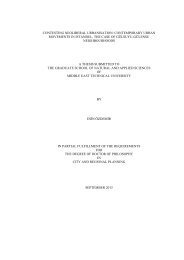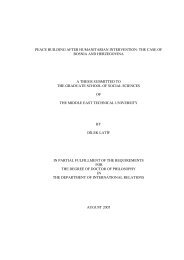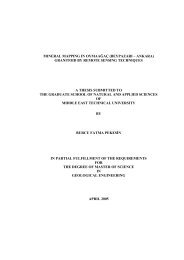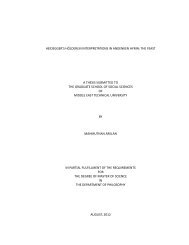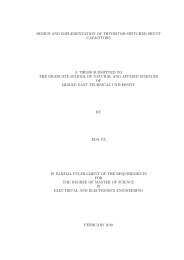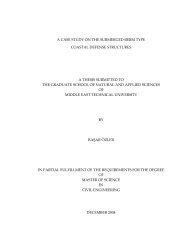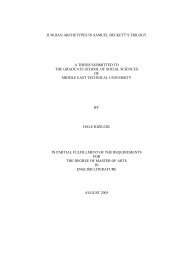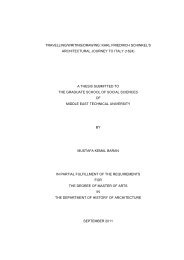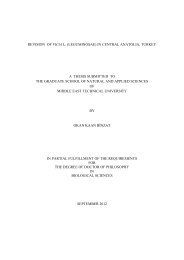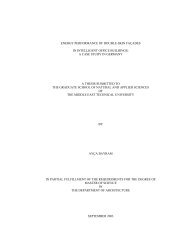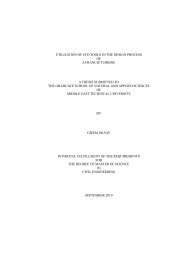View Original - Middle East Technical University
View Original - Middle East Technical University
View Original - Middle East Technical University
You also want an ePaper? Increase the reach of your titles
YUMPU automatically turns print PDFs into web optimized ePapers that Google loves.
Thereby, ‘the question’ is not substantially the real ‘consistency and homogeneity’ of<br />
the regulation theory, but why ‘the question is posed of the consistency and<br />
homogeneity’ of the regulationist research for those who are against as well as for<br />
those who are all for the délaissement of the Parisian model. In short, ‘the reduction<br />
of the explanatory schema to a mere description’ and regulation theory as an<br />
‘underdetermined model’ are at best secondary to ‘the question’ of the segmental<br />
open-endedness of regulation theory. This is foremostly so because the former<br />
exactly touch upon the two circumstances in which open-endedness in theory may<br />
rebound. First, explanatory schemas are always explanatory of certain phenomena<br />
and/or mechanisms, and as such analysis of categories outside the formerly substantial<br />
quaesitum of an explanatory schema still with the unchanged heuristic may afford an<br />
‘underdetermined model’ in that this would be a fictively visionary openness via an<br />
analytical precocity which is largely rhetorical. Secondly, heuristic infléchissement<br />
within a certain explanatory schema for the analysis of sectors of the real not formerly<br />
under study may increasingly resort to ad hoc provisos, which would then lower the<br />
level of decisiveness within the said explanatory schema. This model of open-<br />
endedness would indeed be a ‘reduction of the explanatory schema to a mere<br />
description’.<br />
In these terms, the very ‘question ... of the consistency and homogeneity’ of the<br />
Parisian theory is in fact more about its ‘[inconsistent] consistency and<br />
[heterogeneous] homogeneity’ than its real ‘consistency and homogeneity’. That is,<br />
regulation theory has always rehearsed a ‘theory informed understanding of time-<br />
changing empirical patterns’(Noel 1987) mostly of economic growth and crises across<br />
industrialised economies; yet the abstract theoretical foundations for the analysis of<br />
these stylised facts –time-changing empirical patterns- have been so far optional and<br />
therefore multifarious(Marxist, Keynesian, Kaldorian etc.). Despite the eclecticism of<br />
this method however, the regulationist analyses have not in the slightest had any<br />
oblique consequences. In fact, Boyer almost brags that ‘régulation theory expanded in<br />
methodological tools –giving the impression of explosive division- and yet<br />
simultaneously produced a set of conclusions which were noticeably convergent and<br />
84



